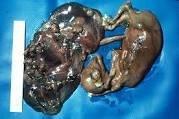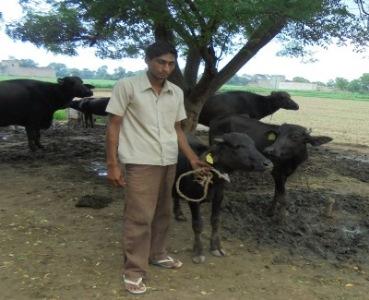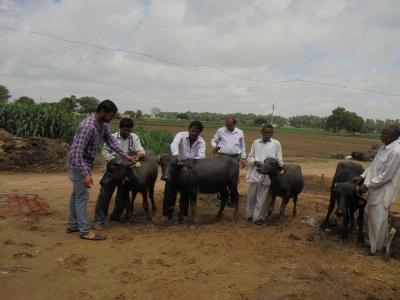Brucellosis, an important bacterial disease of cattle and buffalo is very much prevalent in India. The disease is also zoonotic (infection can be transmitted from animals to humans).
Abortions, retention of placenta, still birth, mastitis, joint swelling, repeat breeding, loss of milk production etc. due to brucellosis in animals causes huge economic losses to the farmer. Once the animal is infected, there is no effective treatment. Humans usually get infected by consumption of raw milk of infected animal or contact with its uterine discharges which results in a myriad of symptoms like persistent fever, joint pain, headaches, malaise etc.
The only effective method available to control this scourge in animals is by vaccinating female calves between 4 and 8 months of age and, this is being carried out free of cost under the sub project “Production of High Genetic Merit Murrah Bulls through Progeny Testing” of National Dairy Plan, implemented by Haryana Livestock Development Board (HLDB),

Aborted foetus from a cow
However, it has been observed that the animal owners are reluctant to get their calves vaccinated sincethey continue to remain ignorant on the importance of vaccination against brucellosis basically due to low awareness on the disease.
Further, the farmers fail to appreciate the benefits of vaccination since like in other diseases (eg.FMD) there are no severe symptoms seen that cause drastic reduction in productivity or, fatalities. Also, abortions in brucellosis is usually seen only during the first or second calvings after infection, the subsequent calvings may be normal.
Dr. Pawan Kumar, Veterinary Surgeon and his assistant Shri Mahabir Singh (VLDA) working in Government Veterinary Hospital Siswal, (District Hisar) a medium sized village, located at a distance of about 20 km from Hisar town took the challenge to motivate the farmers of their area for Brucella vaccination. They started convincing the farmers about the long term benefits of vaccination and its significance as a zoonotic disease through limited means at their disposal including corner meetings, one- to- one contact and also conveying the message to almost every farmer visiting the hospital for availing veterinary and breeding services. Slowly, the message started spreading to the entire village and reluctance to vaccination started waning.
It was a pleasant surprise and a matter of satisfaction for Dr Pawan Kumar and his team when Shri Ram Chander, a farmer from “Kohli Marg” a hamlet (Dhani) about 5 km from the hospital visited the veterinary Hospital on 4th March, 2015 to enquire about Brucella vaccination.. He insisted that the female buffalo calves in the “Dhani” should also be vaccinated. . As there was no proper road to travel to the hamlet, he even offered to take the Veterinary Assistant on his bike along with vaccine in cool box and drop him backto the hospital after the vaccination to which the Veterinary Assistant agreed. The farmer alsomotivated his fellow villagers to adopt the calf hood vaccination as a result of whichten female buffalo calves belonging to four houses of the “Dhani” spread over an area of more than 2 sq km werevaccinated on the same day.
Similar efforts from motivated farmers can help various bull production projects to implement the disease control programmes more effectively, thus achieving the overall objective of eradicating this dreadful disease.
| Sh. Ram Chander with his Brucella vaccinated calves | Villagers with brucella vaccinated calves in “Kohli Marg” hamlet- Dist.Hisar |


